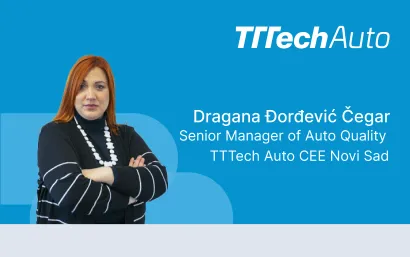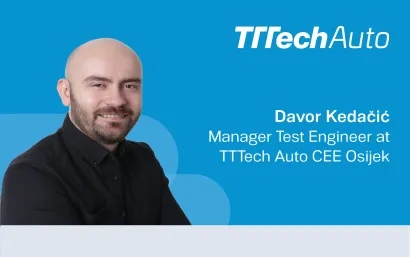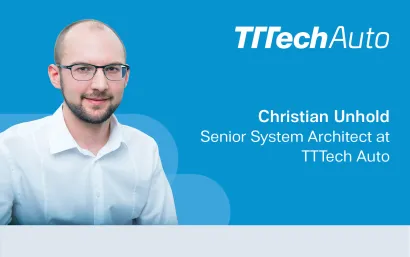This commentary was originally published on Automotive News Europe
By Friedhelm Pickhard, Chief Growth Officer at TTTech Auto
A car is not an iPhone on wheels. Even though the car of the future will probably mean the same thing to most users in terms of features as an iPhone does today. There can be no compromise on safety in a car. If the new car industry does not incorporate the safety aspect into the original design of the software-defined vehicle, this project will fail.
The iPhone has only been around for 15 years. But in that short time, it has fundamentally changed the way we communicate and consume media. A similar transformation has begun in the automotive industry. The software-defined vehicle and its functions will form a strong, perhaps lifelong bond.
An iPhone is not life-threatening
But while no life depends on the iPhone's software features, safety is critical in a car. A car's long life-cycle and the functions that must work reliably in demanding conditions such as storms, snow and ice set it apart.
An uncoordinated patchwork of vehicle safety features can lead to system failures and extremely costly software architecture rework - or worse, injure or kill people. That's why the automotive industry must think about safety from the very beginning.
How can the industry balance development speed with safety?
To match the development speed of consumer electronics such as mobile phones, the automotive industry must first catch up with the development practices of consumer electronics. That means we have to stop thinking in software cycles of months or even years.
Manufacturers, suppliers, software companies and chip makers must be able to coordinate software functions flexibly: automated and on a daily basis. Short feedback loops between the entire development value chain, from the automotive manufacturer to the Tier “N” supplier, are the prerequisite for shortening time-to-market with high quality. Continuous development and integration, as well as validation, are key to achieving this.
This kind of software development process, called Continuous X, is the efficient way to track down errors in the complex interaction in the new automotive ecosystem.
No performance without safety
Consulting firm McKinsey attests that the automotive industry is too complex. Organizing continuous development into a unified, efficient overall process will help manage this complexity.
Safety design methods and practices in the Continuous X process ensure functional safety. This lays the foundation for creating high performance systems for safety applications in an efficient manner in a multi-tiers environment.
A series-proven software platform such as MotionWise can serve as a strong foundation for the software-defined vehicle. This kind of operating system ensures that hardware is abstracted from software, that increasing system complexity becomes manageable, and that software functions are connected via standardized APIs - and are functionally safe. Properties that are the prerequisites for Continuous X driven development approach.
Cost-efficient and safe Level 4 systems
An iPhone does not break or freeze often, but when it does, you do not want your life to depend on it. Continuous development and safety-critical engineering are the way to build the next generation of vehicles. This will significantly reduce costly failures and get Level 4 driving functions on the road faster – and without compromising on safety. The end-consumer will appreciate this. Because after all, a car is more than an iPhone on wheels.
About the ContributorFriedhelm Pickhard is a member of the executive board at TTTech Auto. As Chief Growth & Performance Officer (CGO) he is responsible for engineering performance, quality, growth strategy and execution. He has over 30 years of experience in automotive and defense industry in various engineering and management roles. He has several years of experience in business and R&D management in Asia. He received his degree (Dipl.-Ing.) in Electrical Engineering from the Ruhr University Bochum and in Communication Engineering from the University of Paderborn. |


